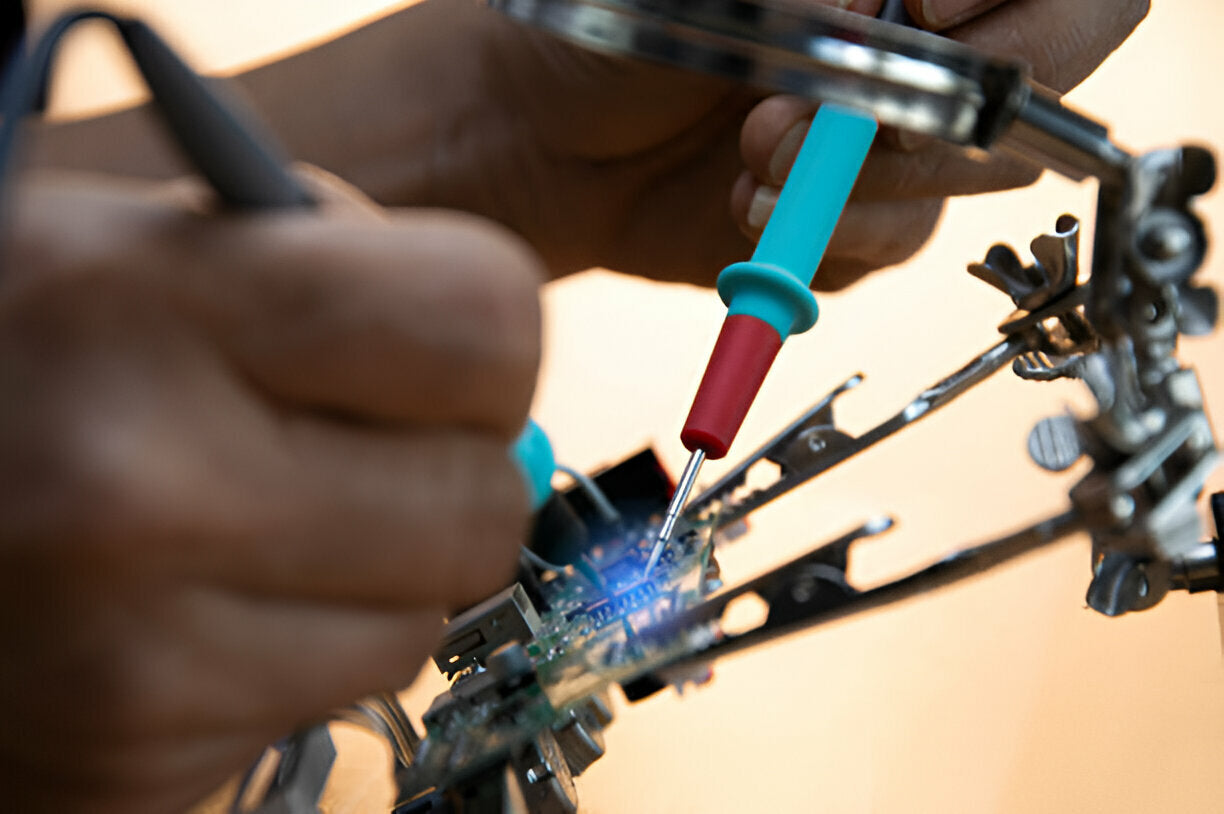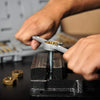
Types of Soldering Irons and Their Uses
Soldering is a crucial technique in electronics and DIY projects that involves joining two or more metal components using molten solder. To achieve precise and reliable soldering results, it is essential to have the right tools at hand. In this article, we will explore the various types of soldering irons available in the market and their specific uses. Additionally, we will delve into the world of soldering accessories for electronics, which can enhance your soldering experience and improve the quality of your work.
Understanding Soldering Irons
Before we dive into the different types of soldering irons, let's first understand the basic components and functionalities of these tools.
A soldering iron consists of the following key elements:
- Handle: The handle provides a comfortable grip and houses the controls for temperature adjustment and power supply.
- Heating Element: This is the part of the soldering iron responsible for generating heat. Common types of heating elements include ceramic heaters, nichrome wire, and PTC (Positive Temperature Coefficient) elements.
- Tip: The tip is the heated metal portion of the soldering iron that comes into direct contact with the solder and the components being soldered. The tip transfers heat to melt the solder and create a strong bond.
Soldering irons come in various types, each designed for specific applications and varying levels of precision. Let's explore these types in detail.
1. Standard Soldering Irons
Standard soldering irons, also known as pencil irons, are the most common type used in electronics and general soldering applications. They are versatile, affordable, and suitable for a wide range of projects.
Heating Element Types
Standard soldering irons typically use one of the following heating element types:
- Ceramic Heating Element: Ceramic heating elements provide fast and consistent heat transfer, ensuring stable and precise soldering temperatures.
- Nichrome Wire: Soldering irons with nichrome wire heating elements are cost-effective and widely used in entry-level soldering applications. They offer reasonable heat-up times and can maintain a consistent temperature during soldering.
Uses
Standard soldering irons are suitable for various applications, including:
- Soldering components on circuit boards
- Wiring and electrical repairs
- Hobbyist projects and simple DIY soldering tasks
2. Temperature-Controlled Soldering Irons
Temperature-controlled soldering irons provide the ability to adjust and maintain a specific temperature during soldering. This feature is essential for delicate components that require precise temperature control to prevent damage.
Temperature Control Mechanisms
Temperature-controlled soldering irons employ different mechanisms to regulate the temperature:
- Analog Control: Some soldering irons use analog dials or knobs to adjust the temperature. They offer basic temperature control but may lack precision.
- Digital Control: Soldering irons with digital displays and buttons provide more precise temperature control. They allow users to set specific temperatures and often include additional features like temperature lock and sleep mode.
Uses
Temperature-controlled soldering irons are ideal for:
- Soldering temperature-sensitive components such as integrated circuits (ICs)
- Fine-pitch surface mount soldering
- Professional electronics repair and manufacturing
3. Soldering Stations
Soldering stations, also known as soldering stations, consist of a power unit and a detachable soldering iron. They offer enhanced temperature control and additional features compared to standard soldering irons.
Features
Soldering stations typically include the following features:
- Temperature Control: Soldering stations allow precise temperature adjustment and temperature stability during soldering.
- Multiple Tips: They often come with interchangeable tips of different shapes and sizes to suit various soldering needs.
- Stand and Holder: Soldering stations provide a dedicated stand or holder for the soldering iron, ensuring safe storage and reducing the risk of accidents.
- Advanced Features: Some soldering stations offer advanced features like programmable temperature profiles, temperature calibration, and automatic sleep mode.
Uses
Soldering stations are commonly used in:
- Professional electronics manufacturing and repair facilities
- Advanced DIY projects that require precise and consistent soldering temperatures
- Sustained soldering sessions where temperature stability is crucial
4. Cordless Soldering Irons
Cordless soldering irons offer portability and convenience by eliminating the need for a power cord. They are powered by rechargeable batteries, making them suitable for soldering on the go or in areas where power outlets are not readily available.
Battery Types
Cordless soldering irons use different types of batteries, including:
- Lithium-Ion (Li-ion): Li-ion batteries provide longer runtimes and faster recharge times compared to other battery types. They are lightweight and offer excellent power density.
- Nickel-Metal Hydride (NiMH): NiMH batteries are known for their higher capacity and can provide sufficient power for extended soldering sessions. They are rechargeable and offer a good balance between performance and cost.
- Butane: Some cordless soldering irons use butane as a fuel source. They offer the advantage of quick heat-up times and can reach higher temperatures compared to battery-powered irons.
Uses
Cordless soldering irons are beneficial in various situations, including:
- Field repairs and soldering in remote locations
- Outdoor soldering projects
- Electronics work on-the-go or in tight spaces without access to power outlets
Soldering Accessories for Electronics
To enhance your soldering experience and achieve better results, it's important to consider using the right accessories. Here are some essential soldering accessories for electronics:
1. Soldering Flux
- Soldering flux is a chemical compound that helps improve soldering performance by reducing oxidation and promoting better wetting. It improves the flow of solder and enhances the bond between the solder and the components.
2. Solder Wick
- Solder wick, also known as desoldering braid, is a braided copper wire used to remove excess solder or to desolder components. It absorbs molten solder, making it easier to remove or rework connections.
3. Soldering Helping Hands
- Helping hands are a useful accessory that holds your workpiece in place, allowing you to have both hands free for soldering. They usually consist of adjustable alligator clips and a weighted base for stability.
Related Article: Top 10 Must-Have Soldering Tool Accessories
Maintaining Your Soldering Iron
To ensure the longevity and optimal performance of your soldering iron, proper maintenance is essential. Consider the following maintenance tips:
Cleaning the Soldering Iron Tip
- Heat the soldering iron to the operating temperature.
- Wipe the tip with a damp sponge or brass wire cleaner to remove oxidation and excess solder.
- Apply a small amount of solder to the tip to help protect it from oxidation when not in use.
- Repeat this process periodically during soldering sessions to maintain a clean tip.
Storage and Safety
- Always store your soldering iron in a safe and secure location, away from flammable materials and out of reach of children.
- Use the provided stand or holder to store the soldering iron when not in use.
- Disconnect the soldering iron from the power source when finished.
Tip Replacement
- Over time, soldering iron tips can wear out or become damaged. Replace the tip when it shows signs of deterioration or fails to transfer heat effectively. Refer to the manufacturer's instructions for proper tip replacement.
Mastering the Art of Soldering
Choosing the right soldering iron is vital for achieving high-quality solder joints in your electronic projects. Consider factors such as power and temperature control, tip variety and compatibility, heating element and durability, ease of use and safety features, and whether a corded or cordless soldering iron suits your needs. Additionally, investing in soldering accessories like a soldering iron stand, various tips and nozzles, soldering flux, solder wick, and helping hands will enhance your soldering experience and improve the quality of your work.
Related Article: Soldering vs. Desoldering: Techniques and Best Practice



